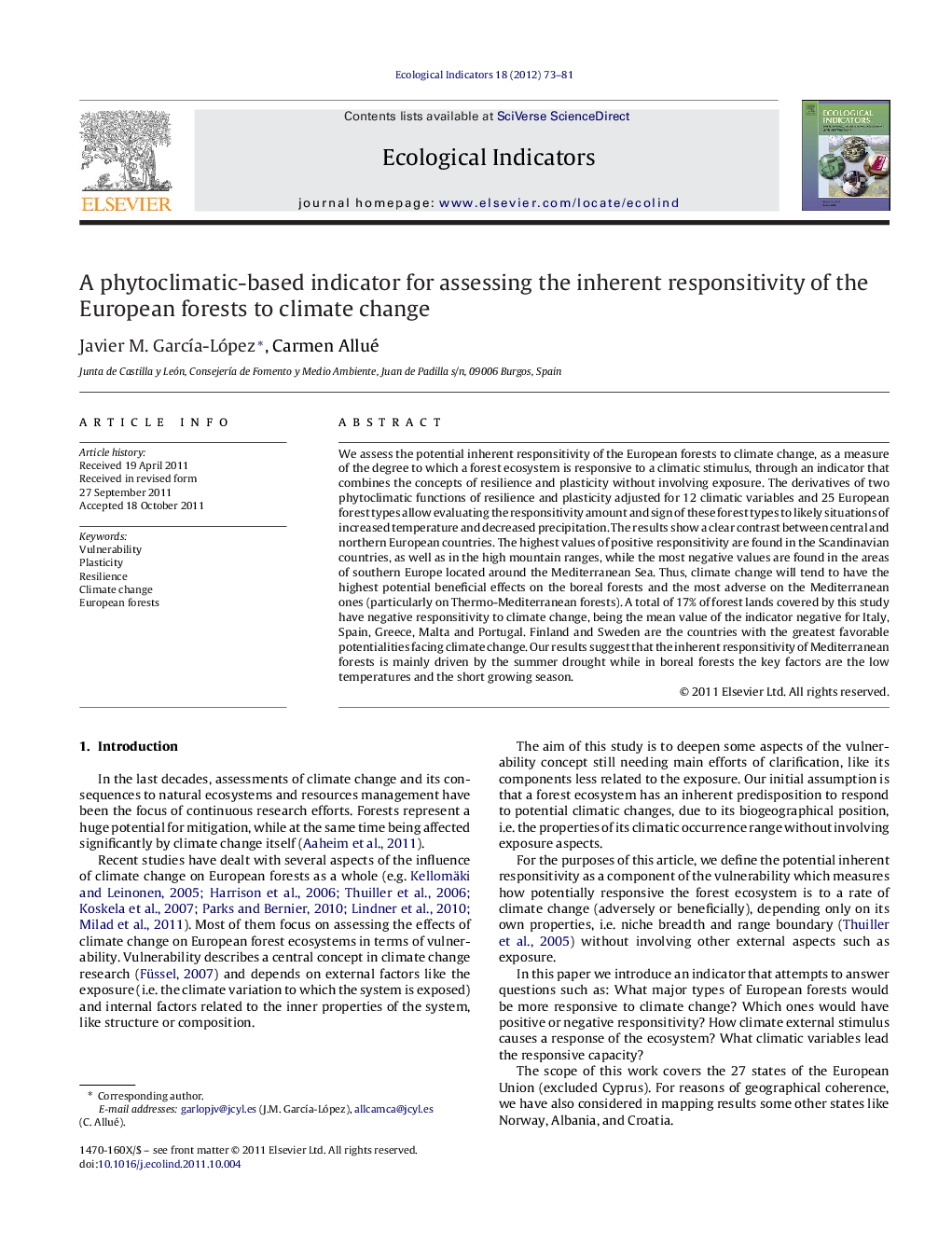| کد مقاله | کد نشریه | سال انتشار | مقاله انگلیسی | نسخه تمام متن |
|---|---|---|---|---|
| 4373762 | 1617182 | 2012 | 9 صفحه PDF | دانلود رایگان |

We assess the potential inherent responsitivity of the European forests to climate change, as a measure of the degree to which a forest ecosystem is responsive to a climatic stimulus, through an indicator that combines the concepts of resilience and plasticity without involving exposure. The derivatives of two phytoclimatic functions of resilience and plasticity adjusted for 12 climatic variables and 25 European forest types allow evaluating the responsitivity amount and sign of these forest types to likely situations of increased temperature and decreased precipitation. The results show a clear contrast between central and northern European countries. The highest values of positive responsitivity are found in the Scandinavian countries, as well as in the high mountain ranges, while the most negative values are found in the areas of southern Europe located around the Mediterranean Sea. Thus, climate change will tend to have the highest potential beneficial effects on the boreal forests and the most adverse on the Mediterranean ones (particularly on Thermo-Mediterranean forests). A total of 17% of forest lands covered by this study have negative responsitivity to climate change, being the mean value of the indicator negative for Italy, Spain, Greece, Malta and Portugal. Finland and Sweden are the countries with the greatest favorable potentialities facing climate change. Our results suggest that the inherent responsitivity of Mediterranean forests is mainly driven by the summer drought while in boreal forests the key factors are the low temperatures and the short growing season.
Journal: Ecological Indicators - Volume 18, July 2012, Pages 73–81